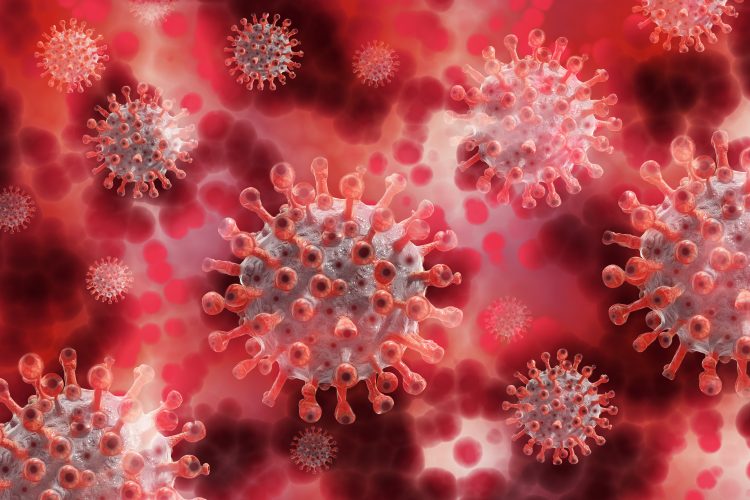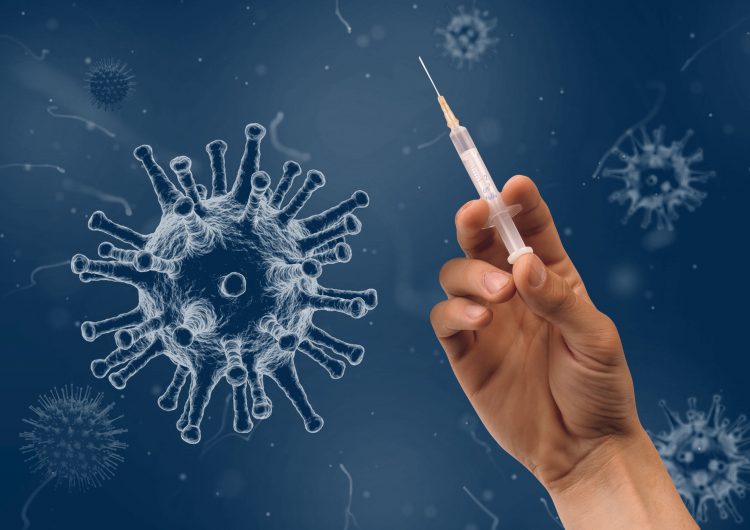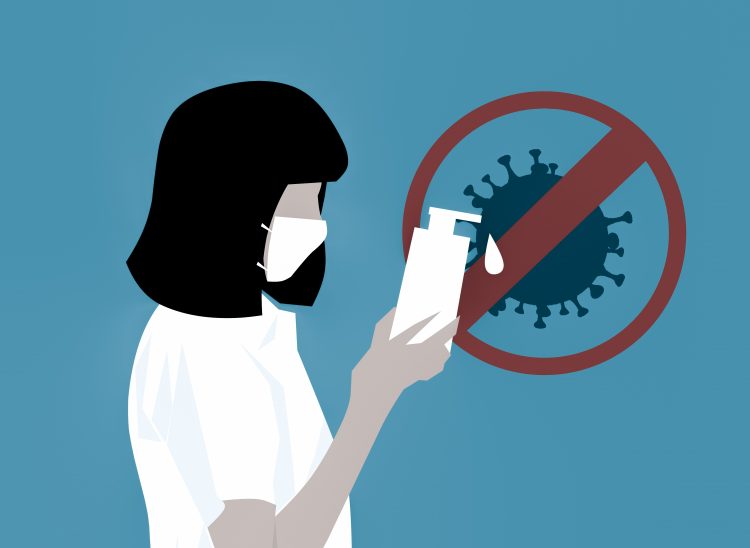BA.5: How dangerous is the new Covid-19 sub-variant?
Pravin Bhatta / July 23, 2022

After remaining low-profile for several months, Covid-19 has begun to spread aggressively in recent weeks. This highly transmissible sub-variant is causing a steep rise in hospitalisation rates worldwide. Countries worldwide are scrambling to get their Covid-19 response mechanisms to work in full force. Nepal, too, has started reviving its Covid-19 response facilities with the rise in infections and hospitalisations. While there were 297 active Covid-19 cases on July 1 in Nepal, the number had increased to 2,971 by July 23. In addition to the increase in infections and hospitalisations, Nepal also reported its first coronavirus-related death case since May 4 on July 17.
The culprit this time is a new Covid-19 variant named BA.5. First detected in February this year in South Africa, the Ministry of Health and population confirmed its presence in Nepal in early July.
In a statement on July 12, the World Health Organization (WHO) said coronavirus remains unpredictable as the virus continues to evolve. The new variant appears silently with unexpected changes that might affect lives worldwide.
What is this new sub-variant, and how worried should we be? South Asia Check explains.
What is BA.5?
It is one of Omicron’s sub-variants, a dominant variant of Covid-19. A variant forms after a slight change in the original form of the virus. There are several categories of Covid-19 variants categorised by the WHO. These variants develop their sub-variants with minor changes, and BA.5 is one such sub-variant of the Omicron lineage.
This new variant spreads faster than its other kin, having a growth advantage over different omicron lineages. The Center for Disease Control and Prevention on July 9 reported that almost 65 percent of the new cases are triggered by BA.5, meaning that the situation is alarming globally. The European nations also suffer from this variant, particularly Portugal, with the highest number of cases. In India, the sub-variant has seen a continuous spike in recent weeks after its first detection in May.
The sub-variant was confirmed in early July in Nepal, but its prevalence was less than BA.2, according to Dr Sameer Kumar Adhikari, joint spokesperson of the Ministry of Health and Population. “We are closely monitoring all the entry points and areas of concern,” Dr Adhikari added.
According to Dr Sher Bahadur Pun, chief of the Clinical Research Unit at the Sukraraj Tropical and Infectious Disease Hospital, the virus is not new. It is, instead, a new sub-variant of the omicron variant that caused mass infections earlier this year.
Why should we be worried?
There is a change in the spike protein of the virus, which is a cause of concern. Spike proteins are targets of vaccines. With the help of spike proteins, the virus enters our body. Vaccines help our body to develop antibodies to recognise the spike protein of the virus and fight it. We are likely to be infected by BA.5 even if we are vaccinated. A July 7 report of the New England Journal of Medicine suggested that the neutralising antibodies in vaccine-boosted people were three times less active in the BA.5 case than in the first omicron variant.
According to Dr Pun, this is a cause of concern but not an extreme situation. Speaking with South Asia Check, the virologist said, “This sub-variant is immune evading, but memory cells like T-cells also work against severe Covid-19 infection. Even if the virus is immune evading, the death ratio has not increased so far. This means that the vaccine is working.”
Dr Pun added that the vaccine should be updated considering the change in the composition of the virus.
How severe is BA.5?
While the infection rates are high, death rates are stable, as global reports suggest. WHO’s Covid-19 technical lead Van Kerkhove was quoted by Reuters saying there is no evidence that BA.5 is more dangerous than any of the other Omicron variants. In another report published by the BMJ, Rochelle Walensky, director of the Center for Disease Control and Prevention, said the clinical severity of BA.5 is not known in comparison with earlier variants of Omicron, but it is more transmissible and more immune evading.
Dr Pun also agrees. “This sub-variant is not seen as more severe than the original Omicron, which itself was less severe than the Delta variant,” he said.

Do vaccines work against BA.5?
The BA.5 sub-variant of the Omicron lineage is pretty different from its predecessors. Early research suggests that it escapes the neutralising antibodies induced by vaccination, booster and previous Covid-19 infection. The spike proteins, which are the critical targets of the vaccines, change, potentially affecting vaccine efficiency. While the sub-variant is causing a rise in Covid-19 infections globally, there is no substantial rise in death rates. This, according to a Reuters report, might be because of vaccination.
According to Dr Pun, vaccines against the virus are still working since the infection-to-death ratio and severity remain low. Vaccination against the virus, as per Dr Pun, is an effective way of evading severe infection and death from the virus. Booster doses, Dr Pun says, help secure us from severe illness.
But with the change in virus composition, Dr Pun argues, there is a need to improvise on the vaccine’s composition.

But vaccination is not enough. We have lived with Covid-19 long enough to know that it is essential to follow safety protocols to evade transmission religiously. As the virus keeps changing its attributes and continues to challenge our health and wellbeing, it is necessary to follow safety protocols.
Note: Two months ago, South Asia Check published an explainer about a quickly spreading new sub-variant of the Omicron lineage, XE. We explained how the formation of new variants is expected over time. Read the explainer here.
This material is copyrighted but may be used for any purpose by giving due credit to southasiacheck.org.
Comments
Latest Stories
- In Public Interest Covid-19 cases are low, but that’s not an excuse to avoid vaccination
- In Public Interest What is BF.7, the sub-variant that has the world by its grip?
- In Public Interest Threat of a new Covid-19 wave looms large amid vaccine shortage in Nepal
- In Public Interest As cases decline, Covid-19 test centres in Kathmandu are desolate lot
- In Public Interest Dengue test fee disparity has patients wondering if they’re being cheated
- In Public Interest As dengue rages on, confusion galore about what it is and what its symptoms are. Here’s what you need to know
In Public Interest
 Covid-19 cases are low, but that’s not an excuse to avoid vaccination
The Pfizer-BioNTech bivalent vaccines authorised by the Nepal Government provide better protection a...
Read More
Covid-19 cases are low, but that’s not an excuse to avoid vaccination
The Pfizer-BioNTech bivalent vaccines authorised by the Nepal Government provide better protection a...
Read More
- What is BF.7, the sub-variant that has the world by its grip?
- Threat of a new Covid-19 wave looms large amid vaccine shortage in Nepal
- As cases decline, Covid-19 test centres in Kathmandu are desolate lot
- Dengue test fee disparity has patients wondering if they’re being cheated
- As dengue rages on, confusion galore about what it is and what its symptoms are. Here’s what you need to know